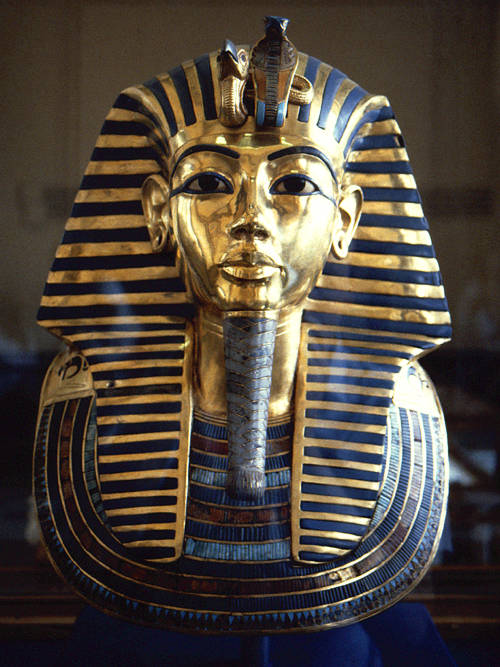| Revision as of 11:37, 17 September 2002 view source217.168.172.202 (talk) privledges -> privileges← Previous edit | Revision as of 13:00, 19 September 2002 view source Jeronimo (talk | contribs)8,556 editsm inline imageNext edit → | ||
| Line 1: | Line 1: | ||
| '''Tutankhamun''' was ] of ] in the 14th century BC, from ]-], during the period known as the ]. | '''Tutankhamun''' was ] of ] in the 14th century BC, from ]-], during the period known as the ]. | ||
| ] | <div style="float: right">]</div> | ||
| Tutankhamun (or '''King Tut''') is perhaps best known to modern westerners as the only pharaoh to have his intact, unplundered ] discovered. However, he is historically important as well. | Tutankhamun (or '''King Tut''') is perhaps best known to modern westerners as the only pharaoh to have his intact, unplundered ] discovered. However, he is historically important as well. | ||
Revision as of 13:00, 19 September 2002
Tutankhamun was Pharaoh of Egypt in the 14th century BC, from 1333 BC-1323 BC, during the period known as the New Kingdom.

Tutankhamun (or King Tut) is perhaps best known to modern westerners as the only pharaoh to have his intact, unplundered tomb discovered. However, he is historically important as well.
Tutankhamun is the son-in-law of the great King Akhenaton (also known as Amenhotep IV), and was responsible for reversing much of King Akhenaton's Amarna revolution, in which Akhenaton attempted to supplant the existing priesthood and gods with a god of his own devising, Aten.
Tutankhamun, still a young boy and probably under the influence of two older advisors, restored the old pantheon of gods and their temples, granted the traditional privileges back to their priesthoods, and moved the capitol back to Thebes.
Tutankhamun died at the age of 18 of unknown causes. On his mummy there is evidence of an injury to his head, which apparently had time to partially heal before his death.
Tutankhamun was briefly succeeded by the older of his two advisors, Ay, and then by the other, Horemheb, who obliterated most of the evidence of the rules of Akhenaton, Tutankhamun, and Ay.
Howard Carter discovered Tutankhamun's tomb in 1922, setting off a renewed interest in the modern world in all things Egyptian.